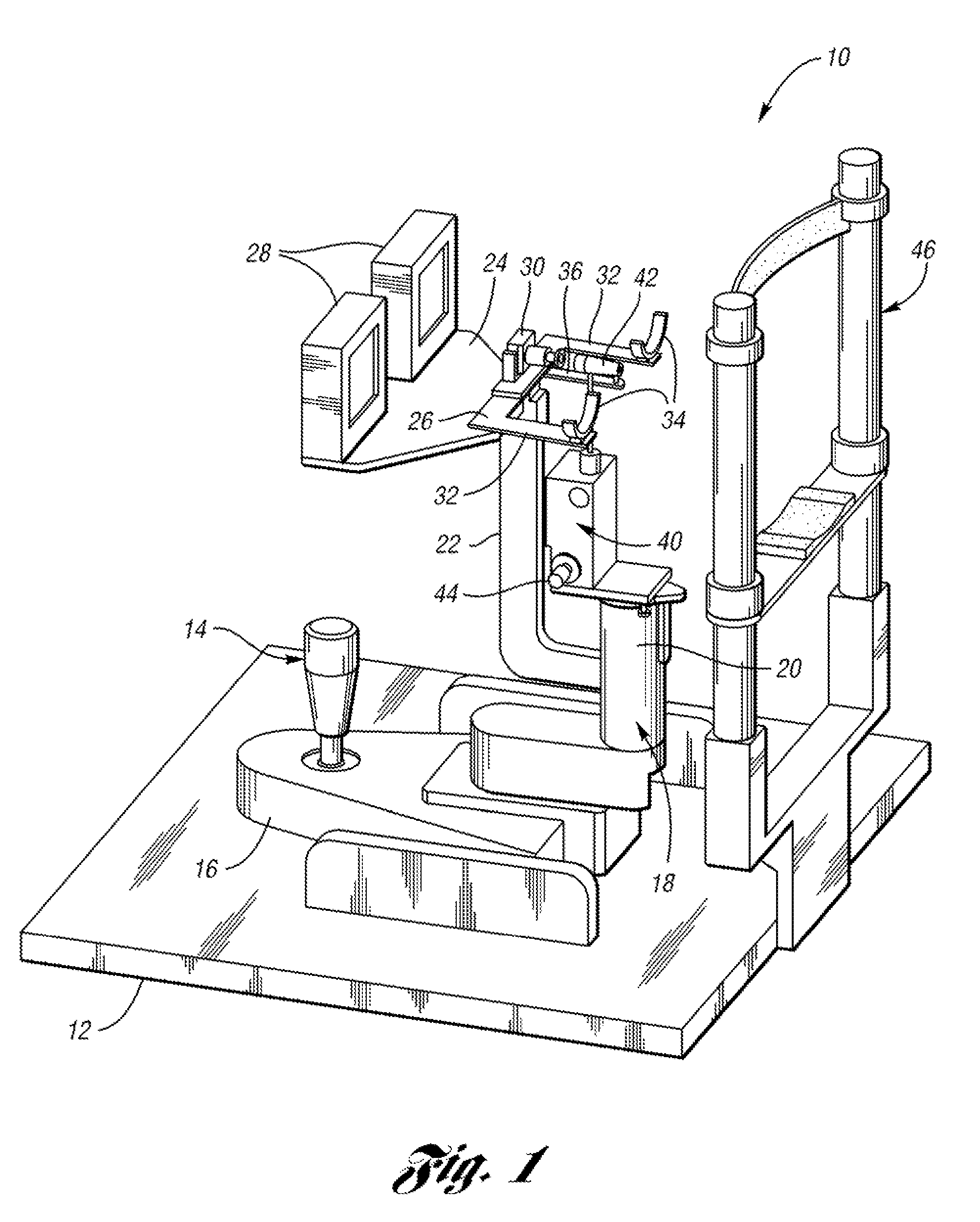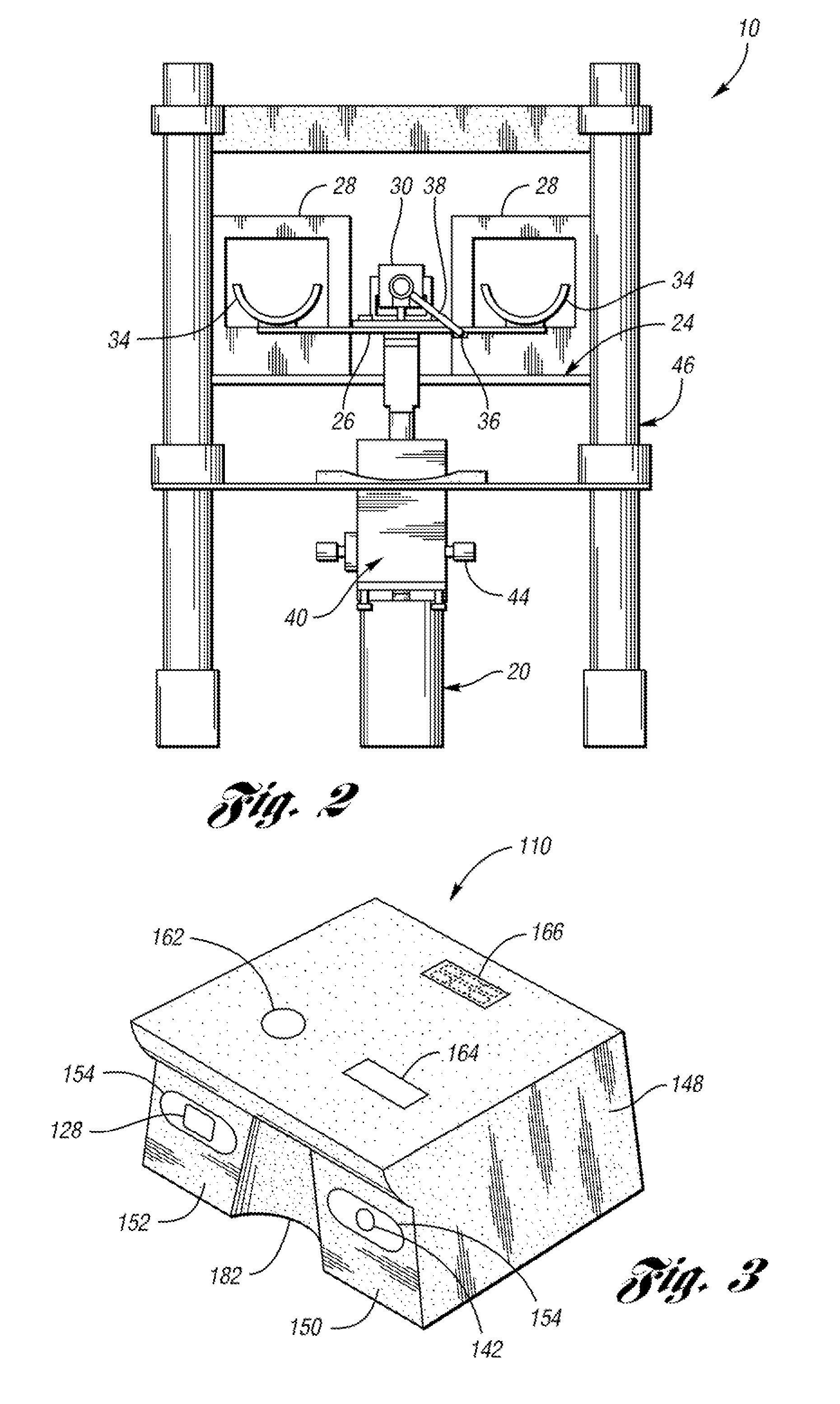Apparatus and method for self-measurement of intraocular pressure
a self-measurement and intraocular pressure technology, applied in the field of apparatus and method for self-measurement of intraocular pressure, can solve the problems of increasing the difficulty of intraocular pressure measurement, so as to achieve the effect of easy to obtain reliable measurements of intraocular pressur
- Summary
- Abstract
- Description
- Claims
- Application Information
AI Technical Summary
Benefits of technology
Problems solved by technology
Method used
Image
Examples
Embodiment Construction
)
[0049]The present invention is directed to a apparatus and method for self-measurement of intraocular pressure (IOP). Referring first to FIGS. 1 and 2, a first embodiment of a self-tonometry apparatus 10 according to the present invention is illustrated. Apparatus 10 somewhat resembles a conventional slit lamp (Haag-Streit or the like) except that the microscope and illumination tower of the slit lamp are replaced with illumination and imaging components according to the present invention. Apparatus 10 comprises a housing which includes a base 12 with a joystick 14 and guide plate 16 disposed thereon, similar to a conventional slit lamp. Joystick 14 allows movement of guide plate 16 relative to base 12 in left and right directions, and toward and away from the user. The user can also turn the joystick 14 in a clockwise manner and in a counterclockwise manner to move guide plate 16 up and down. As best shown in FIG. 1, the housing further includes a support 18 extends upwardly from ...
PUM
 Login to View More
Login to View More Abstract
Description
Claims
Application Information
 Login to View More
Login to View More - R&D
- Intellectual Property
- Life Sciences
- Materials
- Tech Scout
- Unparalleled Data Quality
- Higher Quality Content
- 60% Fewer Hallucinations
Browse by: Latest US Patents, China's latest patents, Technical Efficacy Thesaurus, Application Domain, Technology Topic, Popular Technical Reports.
© 2025 PatSnap. All rights reserved.Legal|Privacy policy|Modern Slavery Act Transparency Statement|Sitemap|About US| Contact US: help@patsnap.com



